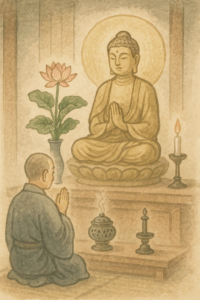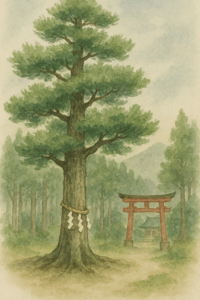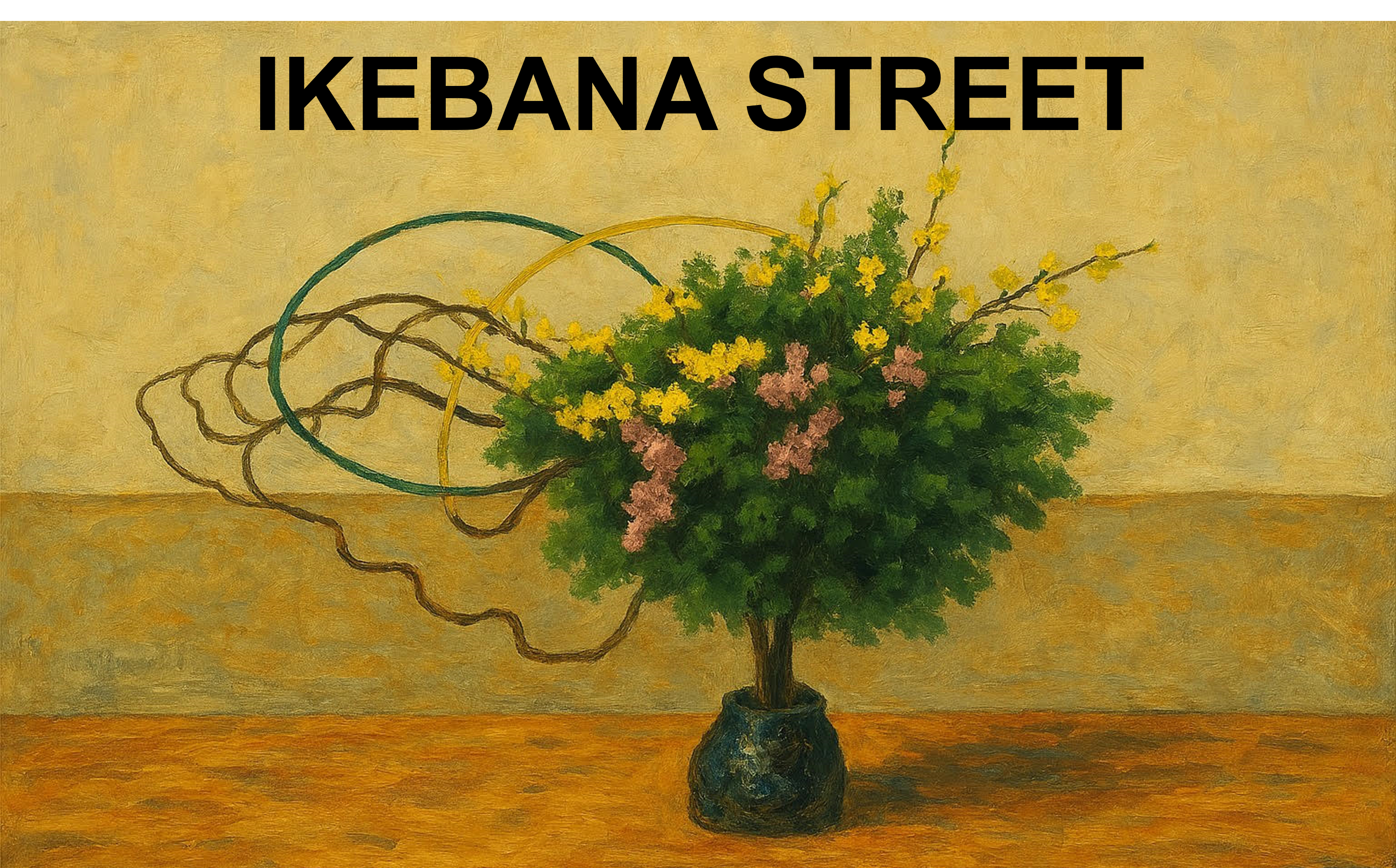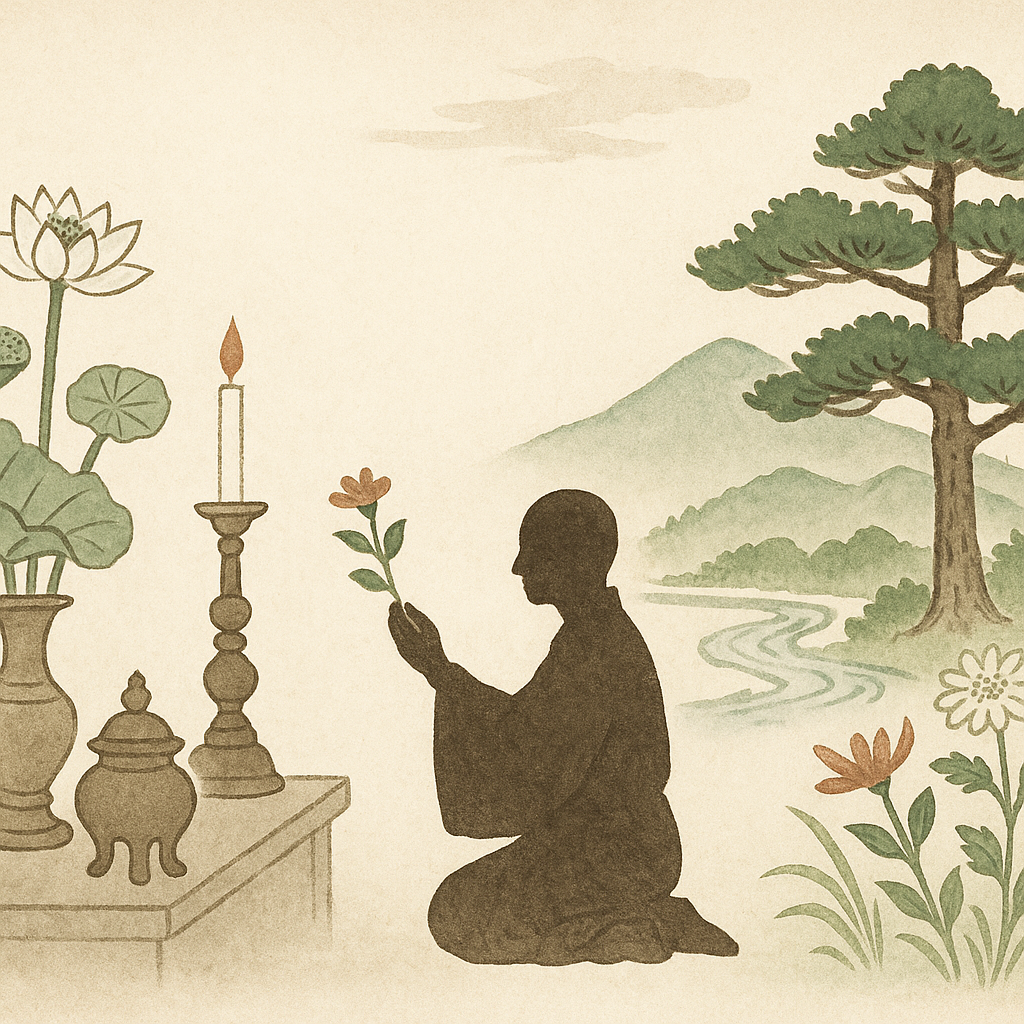Table of Contents
Ikebana is widely recognized as one of Japan’s traditional cultural arts. Its origin cannot be traced to a single event, but rather developed gradually through multiple religious and cultural influences. Among these, Buddhist flower offerings and Japan’s ancient reverence for nature are considered key factors.
The Introduction of Buddhism and the Practice of Floral Offerings
When Buddhism was introduced to Japan in the 6th century, the custom of offering flowers at Buddhist altars, known as kue (供花), also arrived. This practice originated in Indian Buddhism, where lotus flowers were offered before statues of the Buddha to express respect and devotion.
In Japan, the act of offering flowers before the Buddha gradually became a common practice. Thanks to Japan’s distinct seasonal climate, the custom of offering seasonal flowers naturally took root. From the Kamakura to Nanbokuchō periods, the arrangement known as sangu-soku (三具足)—a set of a flower vase, incense burner, and candle stand—became a standard for altar decoration, blending visual beauty with religious meaning. These religious practices are thought to have formed the foundation of ikebana techniques and styles.

They The Japanese Perspective on Nature and Plants
Long before the arrival of Buddhism, the Japanese archipelago nurtured a belief system that viewed nature as sacred. Natural elements like mountains, rivers, trees, and rocks were considered to be inhabited by deities, and evergreen trees were especially revered as divine vessels. This belief remains visible today in New Year’s pine decorations and sacred ropes used at Shinto shrines.
Furthermore, Japan’s clearly defined four seasons have had a profound impact on daily life and sensibility. The flowers of each season influenced people’s lives and emotions. Ancient poetry anthologies such as the Manyōshū and Kokin Wakashū are filled with verses about flowers, illustrating that a culture of appreciating and feeling nature’s beauty was already well established.

Early Signs of Ikebana
Thus, the Buddhist practice of floral offerings and the Japanese sensitivity to nature and plant appreciation were both deeply rooted in society in their respective ways. While the term “ikebana” and its formalized techniques only emerged in the Muromachi period and later, it is believed that even before then, flower offerings to the Buddha included elements of composition and aesthetic consideration. It is reasonable to view these acts as prototypes of ikebana.
Conclusion
The origin of ikebana was cultivated through the convergence of Buddhist flower-offering traditions and Japan’s ancient worldview and floral sensitivity. Within this cultural and religious backdrop, ikebana eventually took form as an artistic expression of arranging flowers.
In the next article, we will explore how ikebana evolved into a more artistic and structured form during the Muromachi period.


